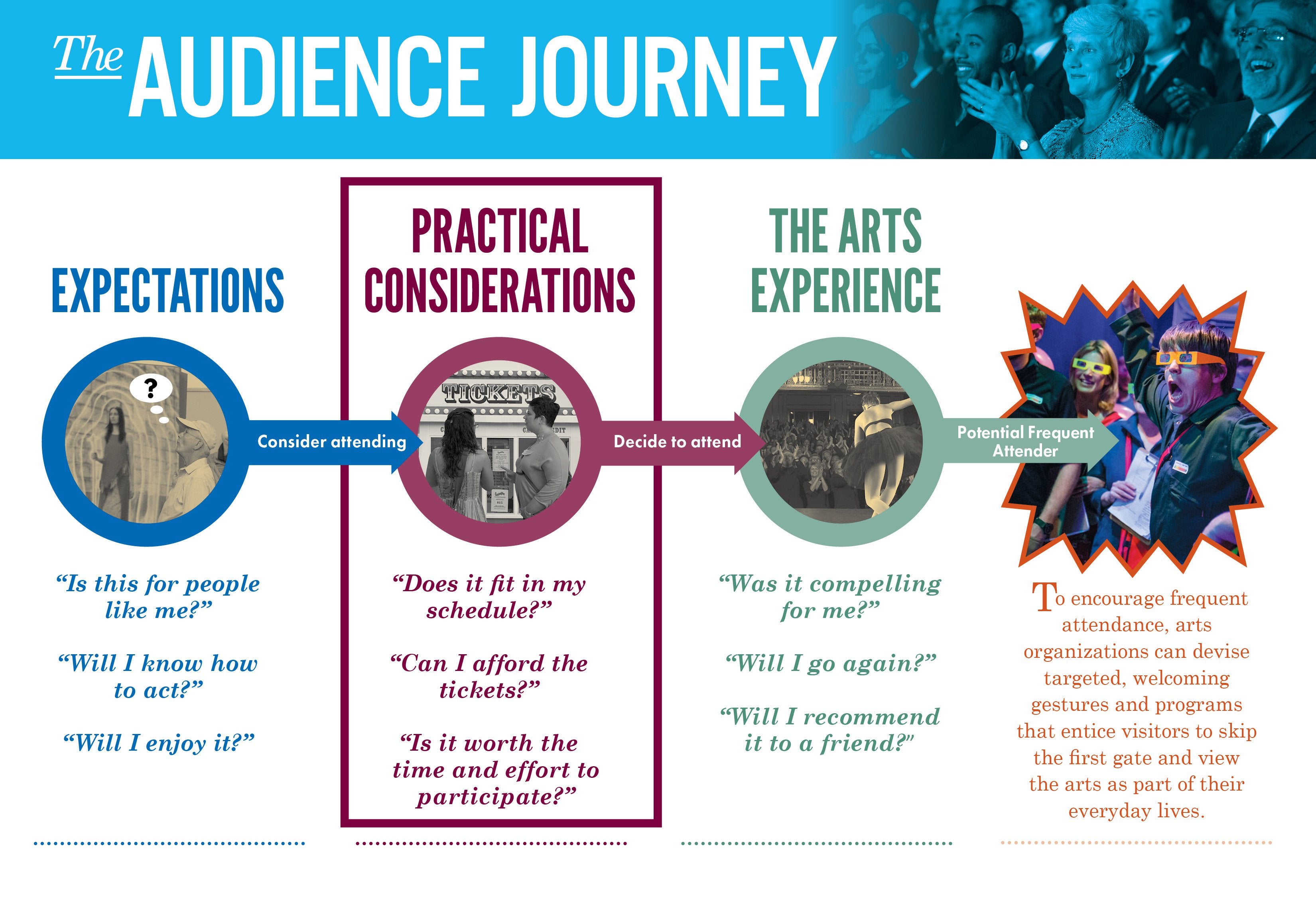Try taking a youngster to a museum. It’s not easy. Where will you put the stroller? What about the crackers and the Cheerios? It’s even harder to manage a visit to an opera or a dance performance.
Such practical thoughts, and others like them, run through the minds of people (be they parents, friends, couples, or individuals) who are interested in participating in the arts—but haven’t yet committed. Their decision making isn’t over because they haven’t worked out when, where, and how they might participate. The barriers they face at this stage are largely practical ones, not perceptual ones, where they are unsure about what to expect. People ask questions like: Does this specific arts opportunity fit in my schedule? Can I afford the tickets? Is it worth my time and effort to participate (opportunity cost)? Where is the show, and can I get there easily? Where will I park my car? Whom will I go with? Do I have all the information I need to make a decision?
In other words, they ask, does it work for me?

Several arts organizations participating in Wallace Foundation initiatives have taken measures to make attendance work for a larger number of people, then tracked the results. In San Francisco, when the Contemporary Jewish Museum targeted families as a desired audience, it first tried offering discounts. But they didn’t come; something else was needed. So, aside from offering a panoply of family activities, like art packs, the museum has marked off a space in its lobby to park strollers, installed changing tables in every restroom, and added low sinks that children can reach on their own. The museum also created family seating nooks in many exhibitions, including places where children may safely draw or read. As families enter the museum, they are told about areas where children may snack and where they may engage in touchable activities. “We try to be clear about what we can allow in a really friendly way,” said Fraidy Aber, Director of Education and Public Programs.
As a result, family visits since 2008 have jumped nearly tenfold, to some 13,000 families visiting a year—or 15 percent of total attendance versus 10 percent at the start.
Several years ago, the Opera Theatre of St. Louis began to hear very clearly that childcare was a practical barrier for many there, too. Now, at select matinees, OTSL offers a half-day “Kids Camp” for $20 per child. “Kids learn all about the performance you are seeing. They hear live music. They learn the story. They make their own little costume and set elements,” said Timothy O’Leary, who was the OTSL’s General Director until July 1 of this year. “And then, when you get your kid at the end of Opera Kids’ Club and you’ve been to the opera, you’ve got a little sheet about what they learned, and you ask them questions on the drive home. This is an incredibly great experience that people responded to really well.” It also exposes a very young generation to the arts, with potential reward in the future.
Other arts institutions have made different modifications to pull down practical barriers. The Seattle Symphony Orchestra, for example, realized that its two- to three-hour concerts starting at 8 p.m. were inconvenient for some would-be patrons, so it started a new series of one-hour concerts, called “Untuxed,” that begin at 7 p.m. They’ve been very successful, attracting many new attendees.
Cost may be the biggest practical barrier for some groups—especially millennials, who, surveys show, typically overestimate ticket prices to arts events—though cost issues may also reflect deeper concerns about risking money on events they do not enjoy. Still, communicating actual ticket prices, and sometimes offering discounts, has helped pull in millennials.
Such practical matters can play a large part in the individual decision making of potential patrons; reducing these barriers can yield measurable results.
This three-post series outlines the Audience Journey, a conceptualization of people's decision-making process when choosing to attend an arts performance, exhibition or event. This post highlights ways to overcome some practical barriers to participating in the arts. Other posts suggest ways organizations might engage people who are less inclined to attend or visit and how to create a rewarding experience that makes people want to return. All posts originally appeared on the National Arts Marketing Project's blog and are reprinted here with permission.




